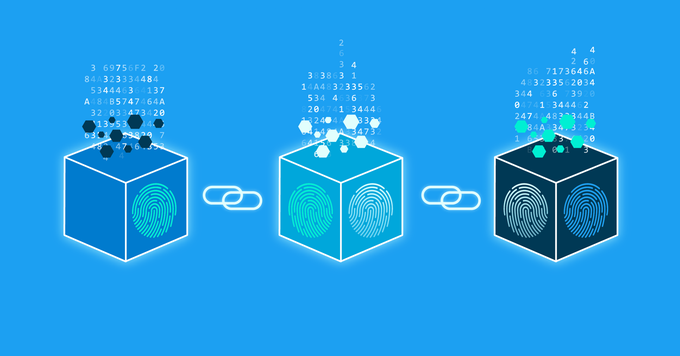
Whelp the ability to withdrawal ETH from the staking contracts goes live today. Notice anything? Spot price of ETH has been going up for the last two weeks. The market seems to not be worried about users unlocking ETH and dumping it on the market, and why would it be?
One thing no one seems to talk about is the fact that anyone can tap into the blockchain with a bot and see what's happening on chain. We do this with Hive all the time. If a bunch of whales start a powerdown there's a reasonable expectation that some percentage of that is going to be sold on the open market.
So if anyone can see everything that's happening on the blockchain, why not just frontrun those whales and dump in front of them, scooping up cheap tokens after they sell anyway. All part of the speculation game.
Ever since Ethereum's move to proof-of-stake the chain has been broken. Not being able to unlock governance tokens on POS is a broken chain. It's somewhat baffling to me that so many crypto users out there are 100% certain that this upgrade, that fixes the chain and makes it whole, is going to result in downward pressure of spot price. Make it make sense. Of course the most vehemently verbal chuckleheads making this claim just so happen to also be Bitcoin maximalists. What a surprise.

Have you heard of NVMe?
I bought my current computing rig in 2016 before I had even started my crypto journey. If I'm being honest I'm surprised how good it is despite being seven calendar years old. Every once and a while I would search for hardware and I was never impressed with potential upgrades I could make... until now. Turns out I was looking in the wrong place.
NVMe stands for Non-Volatile Memory express, and it is a gigantic upgrade over standard SSDs and other forms of data storage.
The 'express' in NVMe stands for PCI express slot, which I can not fully express how satisfying that is. Ever since graphics cards unilaterally made the switch to PCI express I've always wondered, "Well what the hell else are we going to use this slot for?" Now we have an answer. It can be used to increase drive speed by magnitudes. Who'd a thunk it.

Just look at this thing... lol!
In 2016 I was thrilled to get a 500 GB SSD with 500 MB per second read speeds for $200. What a deal. Now I can buy four times the memory operating at x14 times the speed as before. This is a massive upgrade considering hard drive storage is very often the bottle neck that holds back computing. Looks like I'm in the market for a new computer... if only for the vanity of it all. Hardware seems to be quite cheap right now; it seems like a good time... but I might hold out hope for a crypto bull market to ease the sting of the cost. Summer 2023 perhaps?
I bring up NVMe technology because we are always talking about software/consensus upgrades in crypto but very rarely do we focus on hardware upgrades. A server that can run twenty times faster is obviously pretty awesome for crypto on every metric.

Now would be a good time to point out the Bitcoin STILL hasn't increased their blocksize. I've discussed this at length in previous posts but one of the advantages of following a few key maximalists on Twitter is learning new things about BTC.
First of all, Ordinals did figure out a trick with signatures to increase the amount of data on a block, so there is that. But more importantly, the thing I've been talking about in relation to blocksize seems to not be the issue at all. I'm always talking about indexers and server RAM and such, but a random Tweet I saw makes the claim that the real bottleneck is actually bandwidth.
I thought that this was interesting especially considering how many Bitcoin nodes are floating around out there. Yes, it would take quite a bit of bandwidth to seed and reseed the entire blockchain across thousands of nodes worldwide. Perhaps this is correct: Bitcoiners don't want to keep the blocksize low because of server-strain, but rather because seeding a new node from the genesis block in addition to propagating transactions in real time across thousands of nodes could get pretty expensive.
On Hive we realize this argument might be a bit of a moot point. Does Bitcoin really become more decentralized if it has 2000 nodes running instead of 1000? What about 10000? Once you hit a certain number there are extreme diminishing returns. How many nodes does Hive need to stay decentralized? In theory our code makes the claim that we really only need 20 big ones that are directly incentivized by inflation emission. It's quite possible that BTC won't be able to compete with those kinds of incentives long term as we scale into mainstream adoption. We shall see. POW isn't going anywhere anytime soon. But it may loose the top spot.
But again, there is no Hive vs BTC. This is not a competition. BTC continuing to outperform all assets in known human history is good for everyone. That being said this post is about the grind and making upgrades and providing infrastructure. Bitcoin isn't going to have another hardfork for a long long time considering the drama we saw with Ordinals and NFTs. The vast majority of Bitcoin's gains over the next decade will all be off-chain. The same can not be said for other protocols like ETH and Hive.
Conclusion
It's a pretty exciting time to be involved with crypto. The corruption of the legacy economy has become transparently putrid lately. Crypto is the solution, but it will take a lot more grinding to get from where we are to where we need to be.
In addition to all the on-chain advancements that are made, we would also do well to remember the off-chain advancements as well, be it bigger liquidity pools, easier on-ramps, or physical hardware upgrades. It all funnels into a beneficial outcome.